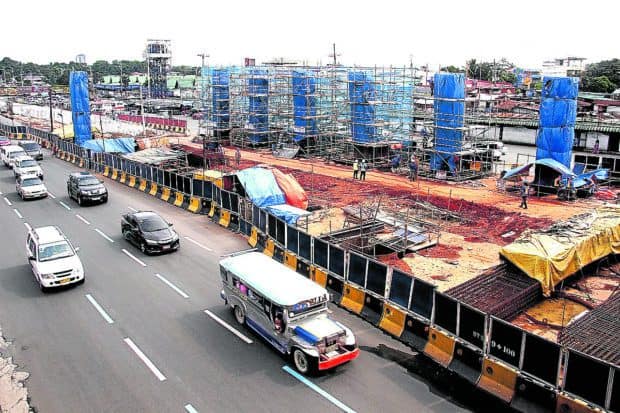
MANILA, Philippines—Building more railways in the Philippines would benefit private landowners and spur economic activity in the National Capital Region and its suburbs as shown by the bustling Metro Rail Transit (MRT) 3 along Edsa, the Asian Development Bank (ADB) said.
In the ADB’s book “Creating Livable Asian Cities” published on Thursday (April 29), the Manila-based multilateral lender said a recent study of its economists around MRT-3—the busiest mass rapid transit line in Metro Manila—showed that since the contract to build it was finalized in 1995, land values in areas within one kilometer of its train stations saw “larger increases” compared to those far from the stations.
“This divergence continued throughout the construction period and until and after the operations had commenced,” the ADB book said.
It said residential lats far from MRT-3 “saw a substantial increase in value from P2,789 to P7,584 per square meter.” Lots that are closer increased in value from P4,972 to P16,036 per sqm.
Lots near the stations, the ADB book said, “saw values increase by P6,268 per sqm more than those far from the station.
Commercial lots grew in value to P22,140 per sqm, the book said.
The book cited results of a study that showed the estimated impact of MRT-3 on land values declined to P3,743 per sqm for residential areas and P13,968 per sqm for commercial areas.
“Using these more conservative estimates, the impact on aggregate land values within one kilometer of MRT-3 stations is estimated to be close to P180 billion,” said the ADB book. It was about five times the cost of building MRT-3, it said.
It said “capturing just one-fifth of the incremental land value increase due to MRT-3 would have been enough” to pay for the project’s total cost and still leave “a very substantial windfall for private property owners.”
Since “more infrastructure funding means more mass rapid transit gets built and developed more quickly,” the ADB said “this can generate more windfalls for property owners and improve productivity and welfare for all residents.”
It said if private property owners would accept that their property values increased partly because of government infrastructure and not luck, “this implies a substantial scope for generating ‘win-win’ situations through land value capture.”
Transportation Secretary Arthur Tugade last Monday (April 26) said the Duterte administration was expected to leave behind in 2022 1,209 kilometers of railway assets with 168 stations, 1,381 trains and 34 awarded contacts across P1.67 trillion in approved rail projects.
Tugade said in 2016, the Philippines had a total of only 77 kilometers of railway assets, with 61 stations and 234 trains under nine rail project contracts.
Among the ongoing big-ticket rail projects were the rehabilitation of the dilapidated MRT-3, as well as construction of MRT-7, Metro Manila Subway, Light Rail Transit (LRT)-1 Cavite Extension, LRT-2 East Extension, Philippine National Railways (PNR) Clark Phase 1, and Mindanao Railway Phase 1.
Article and Photo originally posted by Inquirer last April 30, 2021 4:40pm and written by Ben O. de Vera.







More Stories
Vista Land Celebrates 50 Years with Sandiwa: An Event Honoring Leadership, Legacy, and the Filipino Dream of Homeownership
Vista Land Celebrates Love Month in Ilocos Region
Vista Land Bridges Cebuano Heritage and Progress with Valencia by Vista Estates